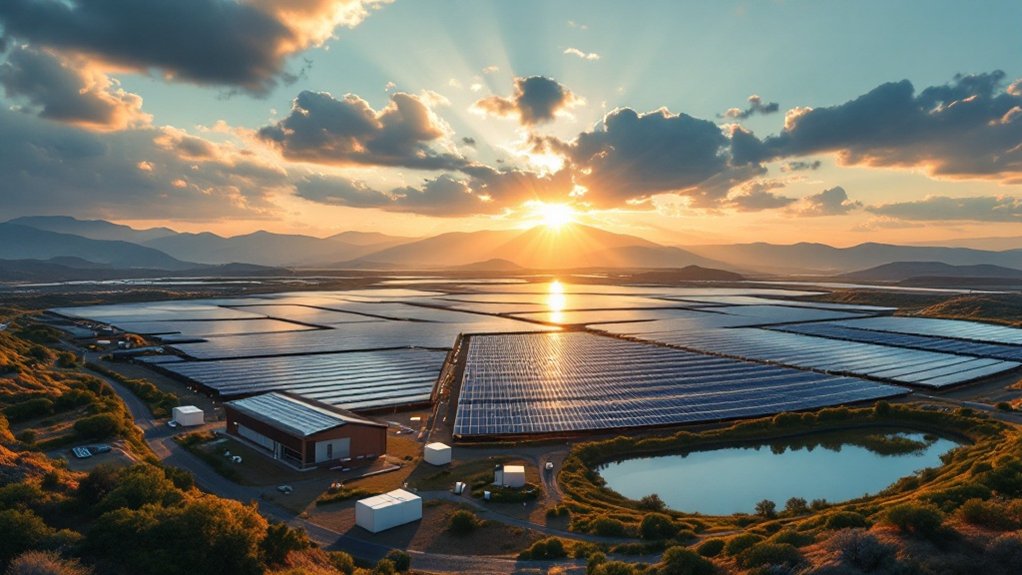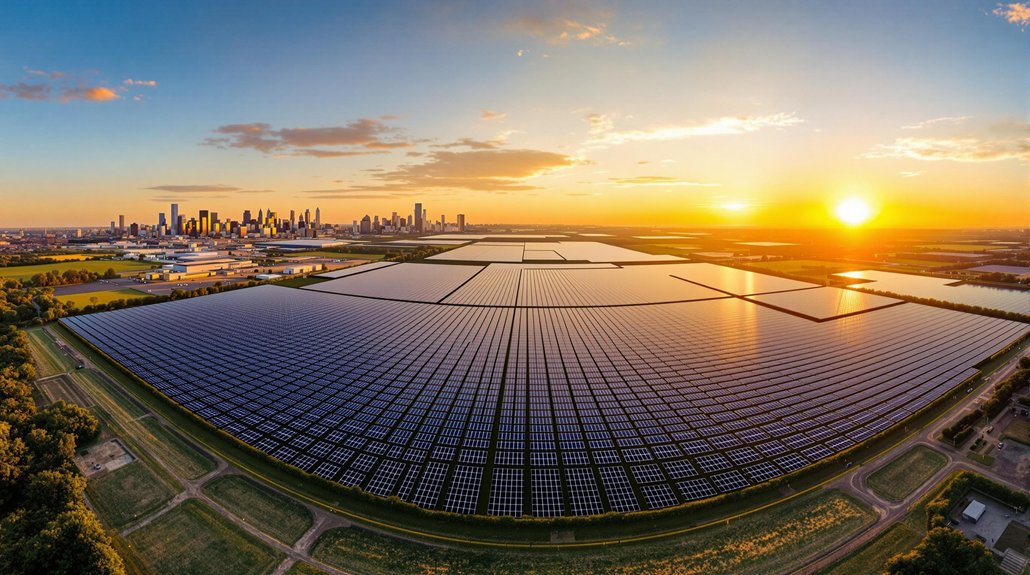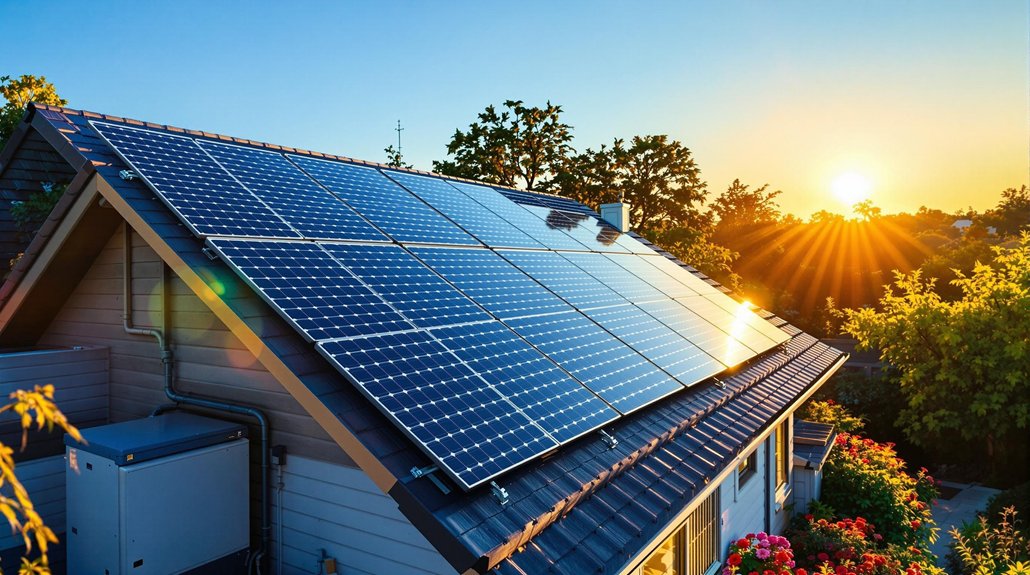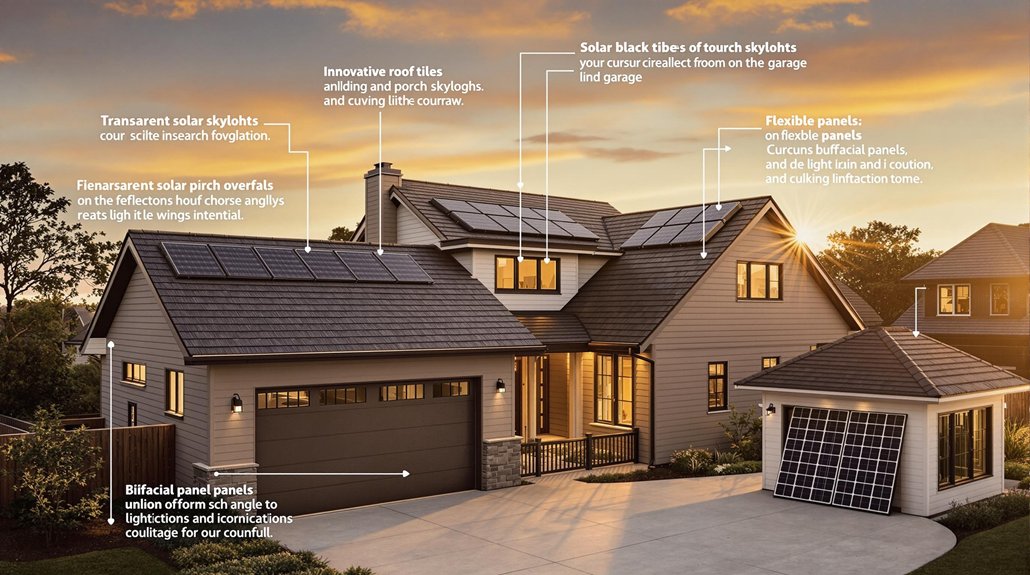Solar energy is rapidly expanding with global capacity reaching 1.2 terawatts in 2022. Technological innovations like perovskite-silicon cells are boosting efficiency from 15% to over 33%. Panel costs have dropped 80% in a decade, making solar competitive with fossil fuels. Energy storage solutions address intermittency issues through batteries and smart systems. Government support, including tax credits extended until 2032, provides stability. These five trends signal a bright future for this clean energy source.

The solar energy industry is experiencing remarkable growth and innovation in 2024. Global solar capacity reached 1.2 terawatts in 2022, with experts saying we need 75 terawatts by 2050 to avoid catastrophic warming. Solar power now makes up 64% of new electricity generation capacity this year. In the U.S., total solar capacity will likely reach 450 gigawatts by 2029, with at least 43 gigawatts being installed yearly from 2025 onward.
Technology improvements are driving this growth. New perovskite-silicon tandem cells achieve 33.7% efficiency, much higher than commercial silicon-only panels at 24.5%. Oxford PV plans to deliver 28.6% efficient commercial cells in 2024. The average panel efficiency has jumped from 15% to over 20% in the past decade. Innovative products like bifacial panels, transparent solar windows, and solar paint are expanding where solar can be used. Researchers are exploring how quantum technologies can further enhance solar cell design and efficiency.
Perovskite-silicon tandem cells are revolutionizing solar with efficiencies reaching 33.7%, far surpassing traditional panels.
Solar’s economic advantages continue to improve. Panel costs have dropped over 80% in the last decade. This makes solar power competitive even in developing countries. Third-party ownership options are becoming more attractive to consumers who don’t want upfront costs. U.S. manufacturing is growing, reducing reliance on imports. The ongoing cost reductions in solar panel production are further increasing competitiveness against fossil fuels. This cost-effectiveness is also complemented by the environmental benefit of carbon emissions reduction compared to traditional energy sources.
Integration with energy storage is solving solar’s intermittency problem. Better batteries, including lithium-ion and solid-state technologies, store excess energy for nighttime use. Smart inverters and AI-driven systems optimize energy management and storage.
New markets are emerging for solar power. Data centers may use up to 9% of U.S. electricity by 2030. Cleantech manufacturing plants will add 11 gigawatts of demand by 2030. Direct Air Capture facilities could create another 2.7 gigawatts of demand.
Government support through the Inflation Reduction Act, which extends solar tax credits until 2032, provides stability for continued growth. These trends point to a bright future for solar energy as costs fall and technology improves.
Frequently Asked Questions
How Much Do Solar Panels Actually Cost Today?
Solar panels currently cost $2.56 per watt on average for residential systems in the U.S. before incentives.
A typical 11 kW home system costs about $29,360, dropping to $20,552 after the 30% federal tax credit.
Commercial installations are cheaper at $1-$2.50 per watt. Prices vary based on system size, location, equipment quality, and roof type.
Solar costs have fallen 80% since 2010.
Can Solar Energy Power My Entire Home During Winter?
Solar panels can power a home during winter, but with limitations.
They actually work more efficiently in cold temperatures, but produce less energy due to shorter daylight hours.
Snow covering panels temporarily blocks production, though the snow’s reflection can boost energy when panels are clear.
Many homeowners use battery storage systems or remain connected to the electrical grid to guarantee reliable power throughout winter months.
What Maintenance Do Solar Panels Require?
Solar panels require minimal upkeep. Experts recommend cleaning them 1-2 times yearly using mild soap and soft materials.
Panels need more frequent cleaning in dusty areas. Homeowners should conduct visual inspections for damage, dirt buildup, and loose connections.
Regular vegetation management prevents shading issues. Performance monitoring systems help track energy production and identify problems early.
Annual professional inspections guarantee peak system operation.
How Long Before My Solar Investment Pays for Itself?
The average solar system pays for itself in 8-12 years across the U.S. Some homeowners break even in as little as 5 years.
The payback period depends on several factors: system cost, local electricity rates, available incentives, energy usage, and geographic location.
Pennsylvania has the shortest state average at 9.42 years.
Payback periods are getting shorter as solar technology improves and becomes more efficient.
Do Solar Panels Work During Power Outages?
Standard grid-tied solar panels don’t work during power outages. They automatically shut down for safety reasons to protect utility workers.
This anti-islanding feature prevents electricity from flowing back into the grid.
However, solar systems with battery storage can continue providing electricity during blackouts.
These batteries store excess solar energy and activate within milliseconds when grid power fails, keeping essential appliances running for several hours.









